The characteristic values of the translational springs are defined separately for the foundations in the direction of the local member axes x, y, and z.
The translational springs are calculated from the foundation modulus [kN/m³]. These coefficients indicate how many kN/m² are needed to compress the soil 1.0 m. The unit is actually kN/(m² ⋅ m).
To define this for a member with a limited width, these coefficients must be multiplied by the respective dimension of the cross-section. Thus, a translational spring related to the member is obtained in kN/m². This indicates how many kN/m are necessary to compress the soil 1.0 m.
C1,z = ks [kN/m³] ⋅ width [m]
In this example, a strip foundation with the cross-section rectangle 500/1000 is considered and a distributed load of 10 kN/m is applied uniformly.
A foundation modulus of ks = 10,000 kN/m³ is assumed. The translational spring in the direction of the local z-axis is, therefore, calculated as follows.
C1, z = 10,000 kN/m³ ⋅ 0.5 m = 5,000 kN/m²






































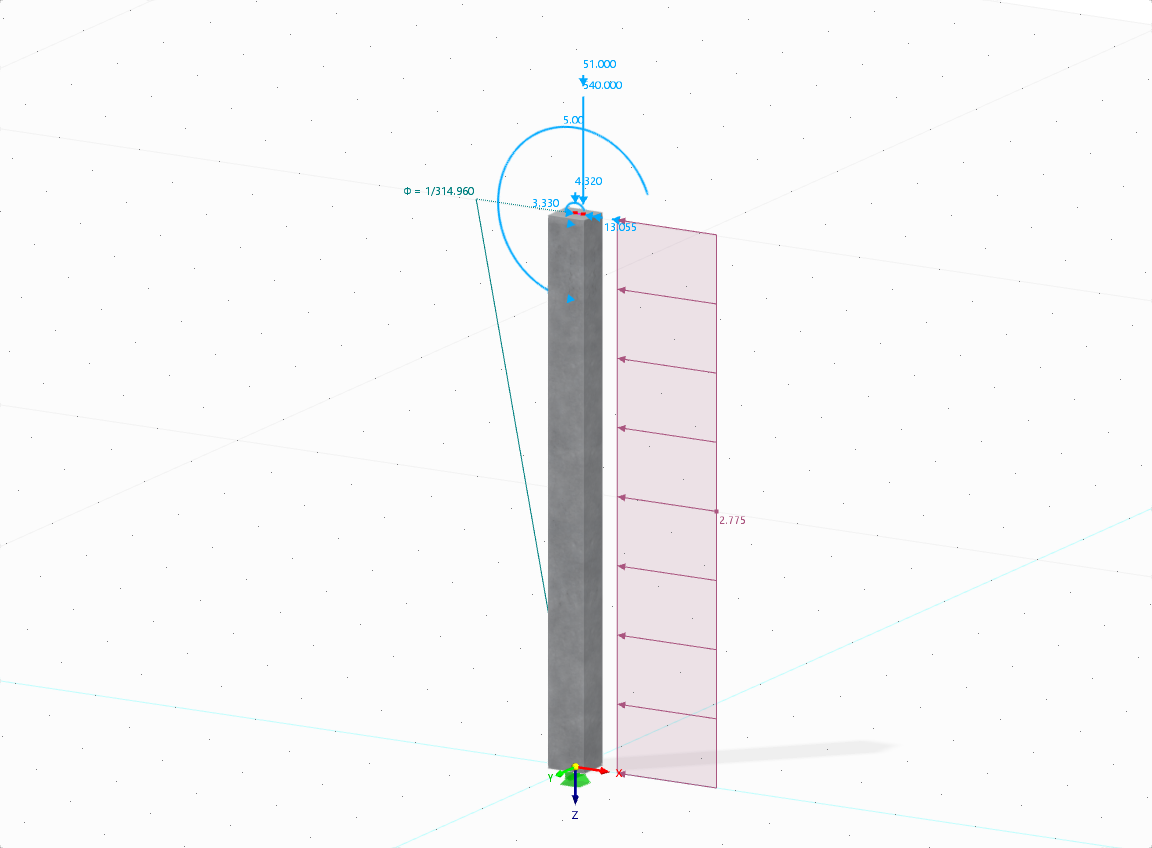

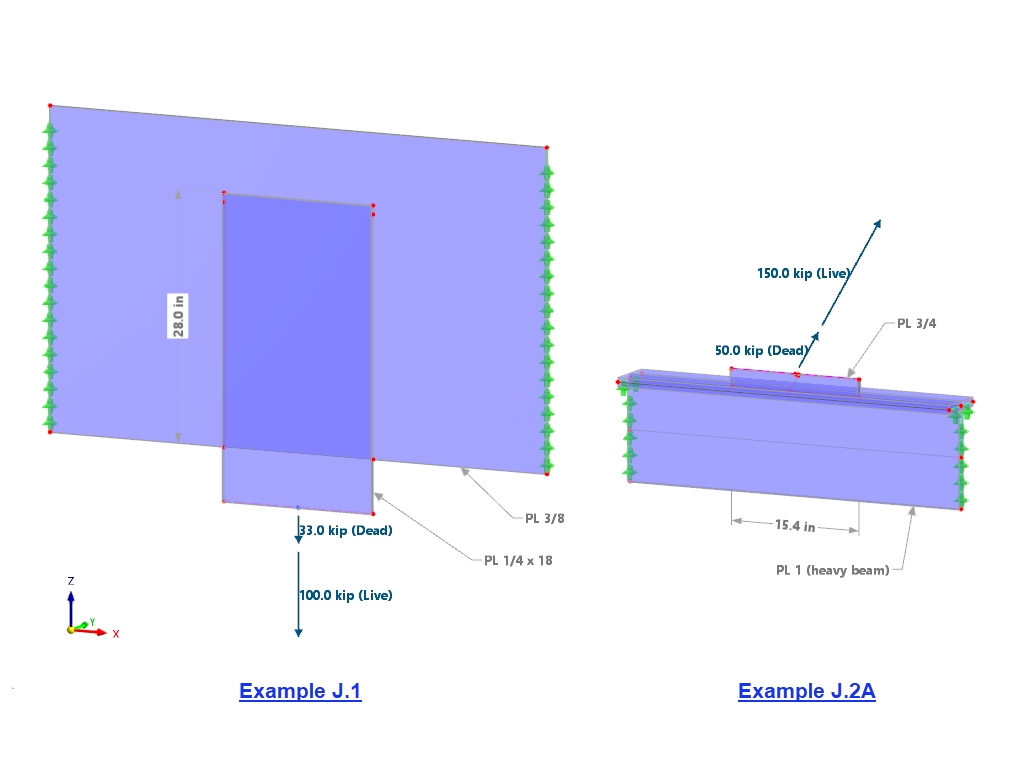









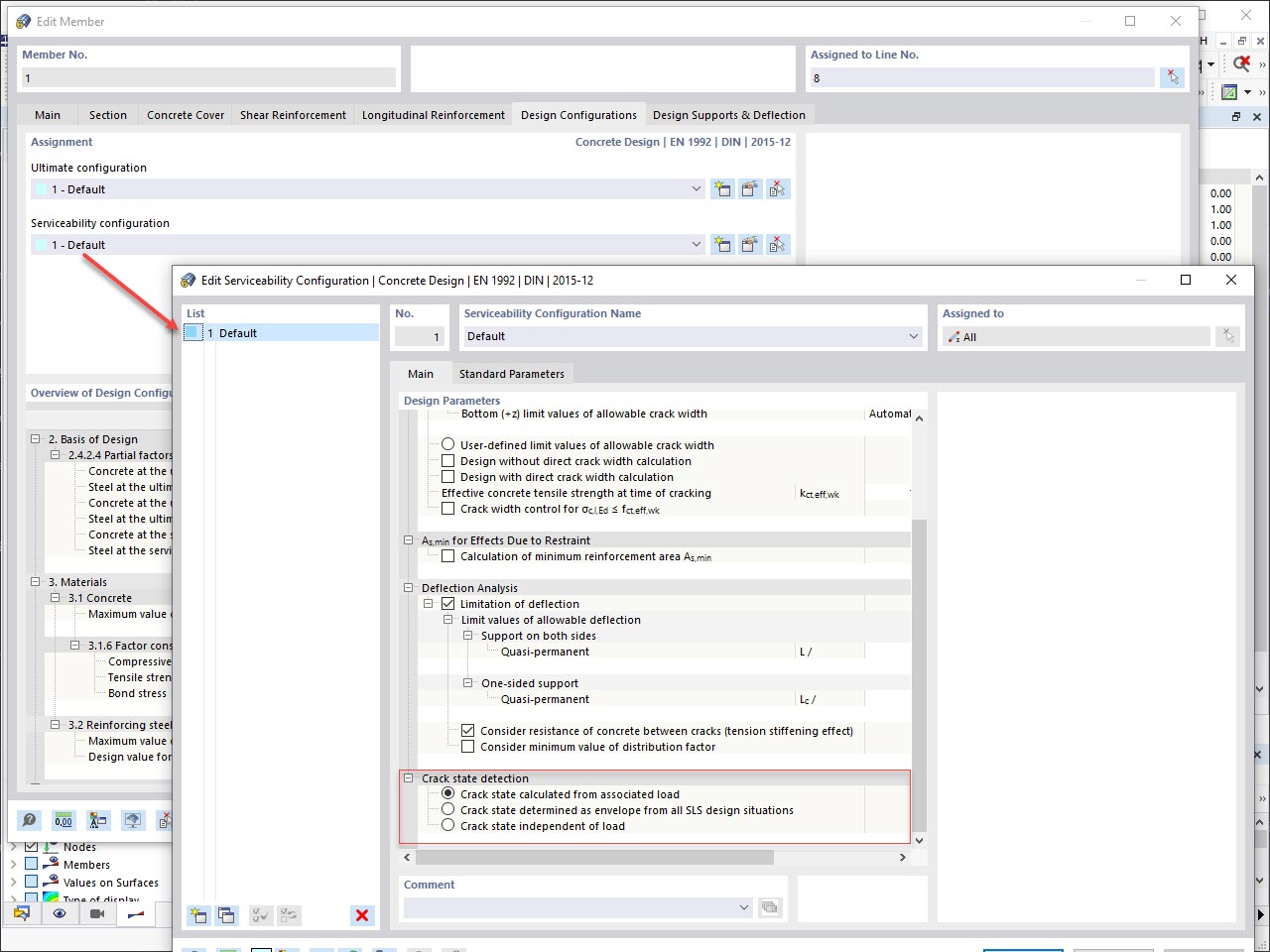
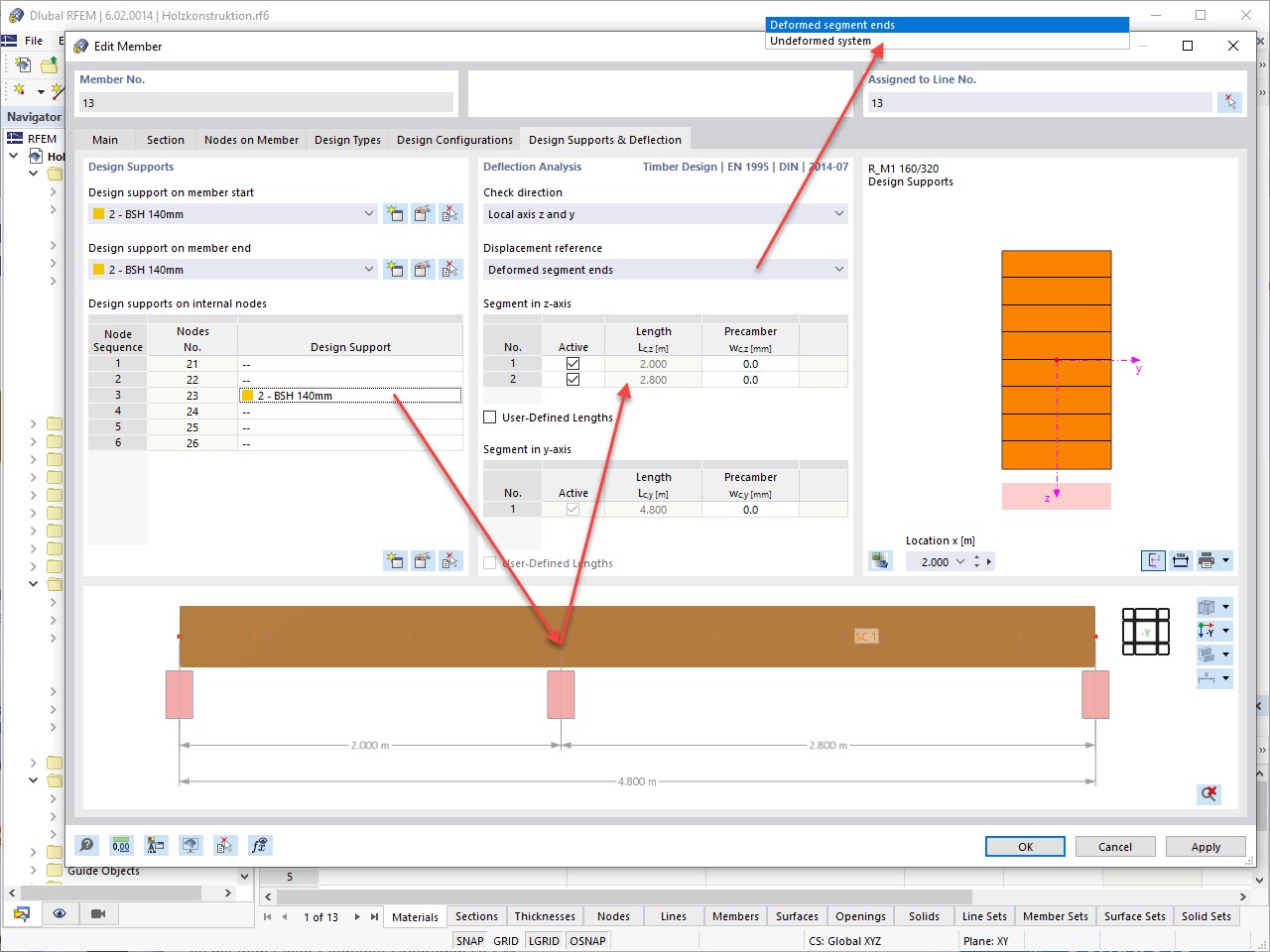
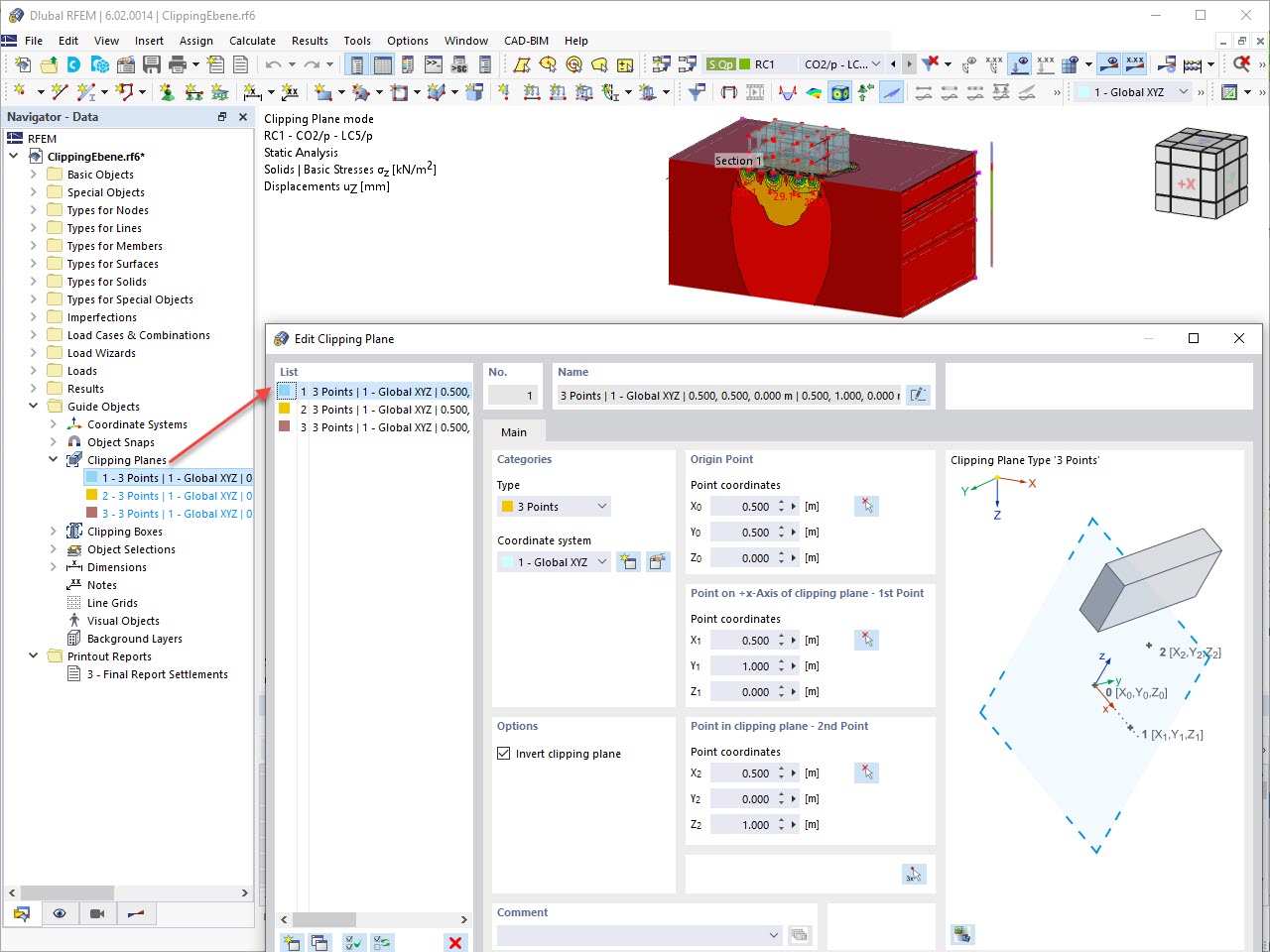
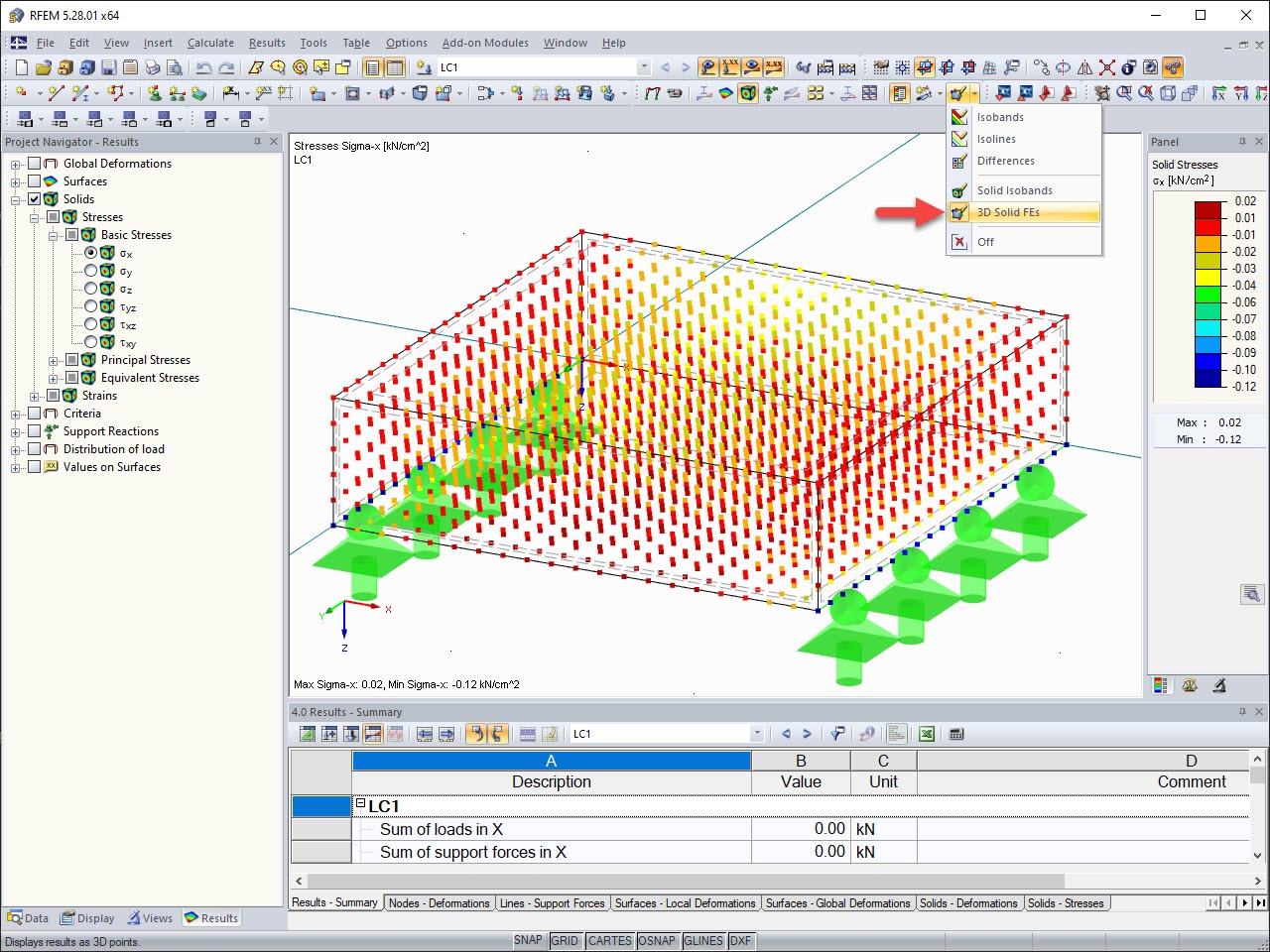






_1.jpg?mw=350&hash=ab2086621f4e50c8c8fb8f3c211a22bc246e0552)